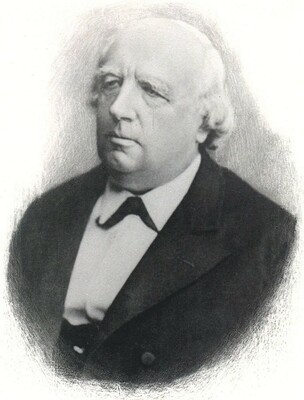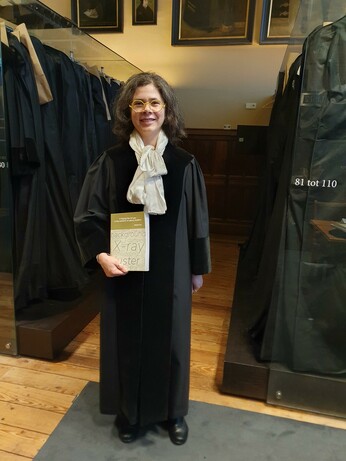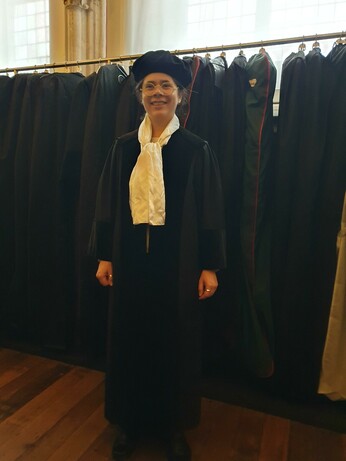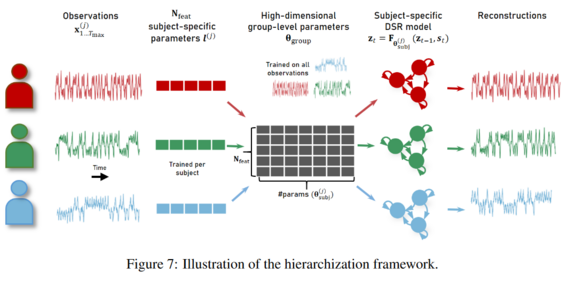
The most terrifying Halloween story I know.
https://mastodon.social/@mcnees/111329860712410917
Me: Please do a copyright infringement.
ChatGPT: I could never! But… would you like me to do a shmopyright impingement? (*wink, wink, nudge, nudge*)
Me: Ya sure
ChatGPT: I gotchu
I think Germany abandoning the professorial dress in the late 60ies was the right thing to do, but I also cannot deny that it's fun to wear a proper university "toga en baret" when on a proper Dutch PhD committee.
We have opened formal proceedings to assess whether Temu may have breached the Digital Services Act in areas linked to:
Sale of illegal products
Potentially addictive design of the service
Purchase recommendations
Access to data for researchers
More: https://europa.eu/!4m8GPM
#DSA #EU
@darkuncle Well played.
Interested in interpretable #AI foundation models for #DynamicalSystems reconstruction?
In a new paper we move into this direction, training common latent DSR models with system-specific features on data from multiple different dynamical regimes and DS: https://arxiv.org/pdf/2410.04814
(Fig. 7)
We show applications like transfer & few-shot learning, but most interestingly perhaps, subject/system-specific features were often linearly related to control parameters of the underlying dynamical system trained on …
(Fig. 4)
This gives rise to an interpretable latent feature space, in which datasets with similar dynamics cluster. Intriguingly, this clustering according to *dynamical systems features* led to much better separation of groups than could be achieved by more traditional time series features.
(Fig. 6)
Fantastic work by the incomparable Manuel Brenner and Elias Weber, together with Georgia Koppe!
@darkuncle @mathaetaes Whenever I run into this sort of thing (which is pretty often) I always think of the line from Star Wars, "The more you tighten your grip, the more star systems will slip through your fingers."
@mhoye Frankly I feel like this goes for any chocolate mass produced in any English-speaking country.
So we are actually, somehow, just 43 paid subscribers away from unlocking a regular posting schedule for the long-form pieces over at Substack!
Also ha ha awkward I’ve been unable to work for most of the month due to surgery so if you were thinking about signing up there or at Patreon, now would be a super awesome time, & subscriptions at both sites count toward the goal.
writing about the terminal is funny because it feels like a very intuitive and comfortable place to me, but the second I try to explain how anything actually works I realize there's SO MUCH I don't know and end up going down some extremely cursed rabbit holes
it’s extremely different from writing about git where git felt very comfortable for me, and when I tried to explain it I did know how it worked except for some small details
Three weeks ago, panic erupted when the South China Morning Post reported that scientists in that country had discovered a “breakthrough” in quantum computing attacks that posed a “real and substantial threat” to “military-grade encryption.”
Among the many problems with follow-on coverage, aside from a lack of skepticism, was its failure to link to the correct paper. For the first time, here's the right one.
@vicgrinberg Thus far I've been keeping my public posts on mastodon a little vague on personally-identifiable specifics, but if you are sufficiently curious I could tell you by way of a DM.
Since Pythagorean stuff is appearing again in the popular press, let me once more recommend _The Pythagorean Proposition_ by Elisha S. Loomis (1852-1940). Depending on how they are counted, the book has about 360 proofs of the theorem. (I will not address the issue of how different they actually are.) It's not a book anyone would read front to back, but it's a lot of fun to flip through. A legal e-copy of the 1968 reprinting of the 1940 second edition can be found at the Education Resources Information Center of the US Department of Education:
@vicgrinberg Yeah, I actually studied outbursts in low-mass X-ray binaries for a little while before settling on a specialty in grad school, and I know it seemed like a bit of a small world.
@vicgrinberg "...and that's how she spent her next year."
- Pronouns
- he/him/his
Moved to Mathstodon.xyz
Theoretical physicist by training (PhD in quantum open systems/quantum information), University lecturer for a bit, and currently paying the bills as an engineer working in optical communication (implementation) and quantum communication (concepts), though still pursuing a little science on the side. I'm interested in physics and math, of course, but I enjoy learning about really any area of science, philosophy, and many other academic areas as well. My biggest other interest is hiking and generally being out in nature.














